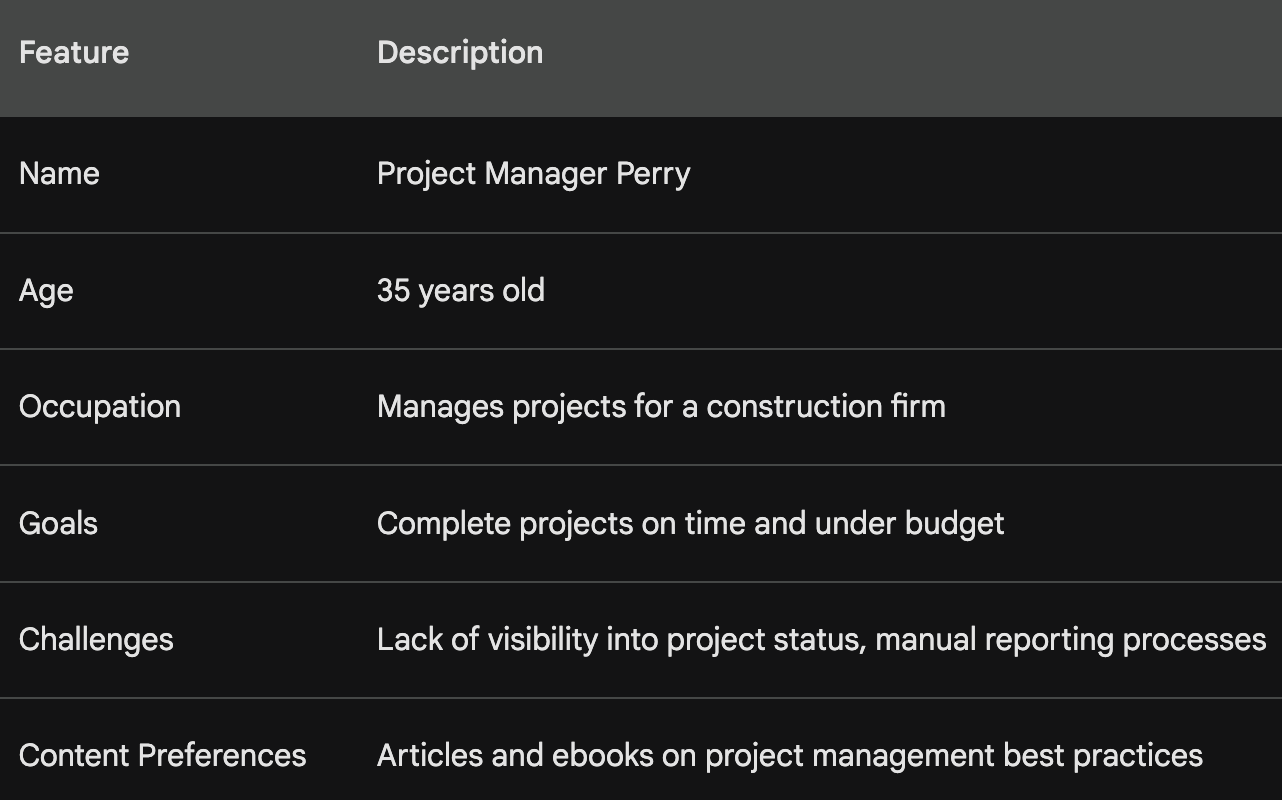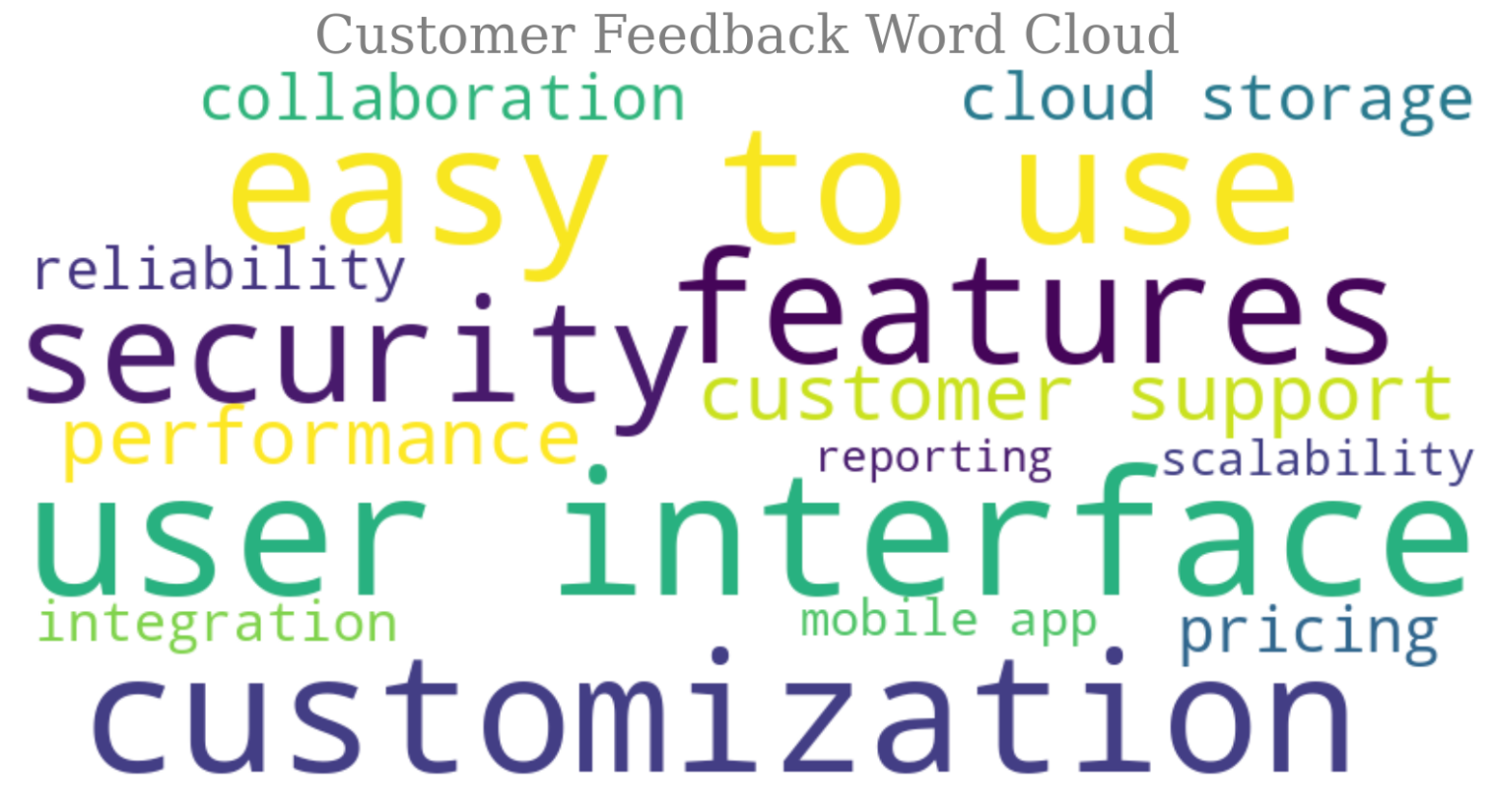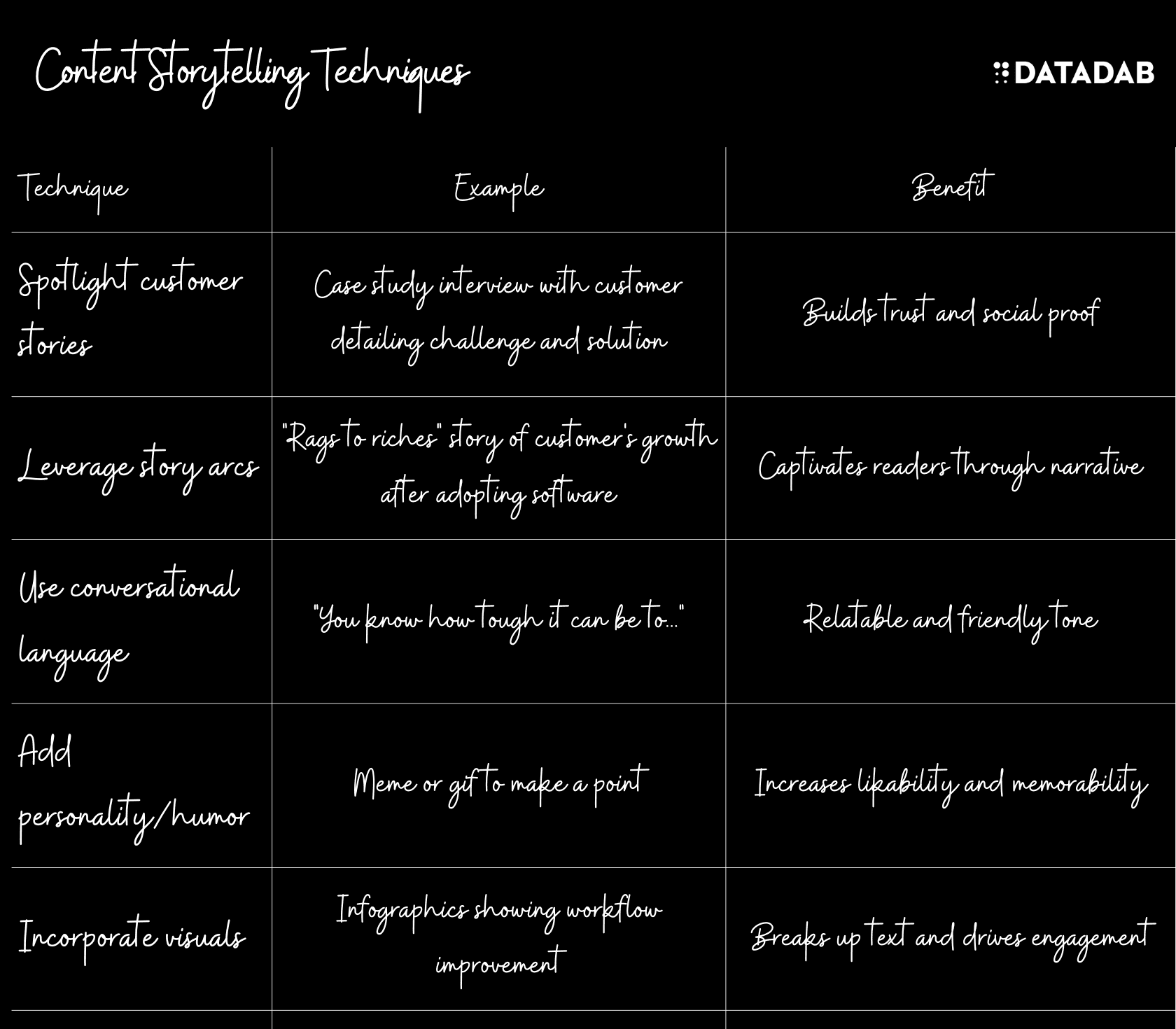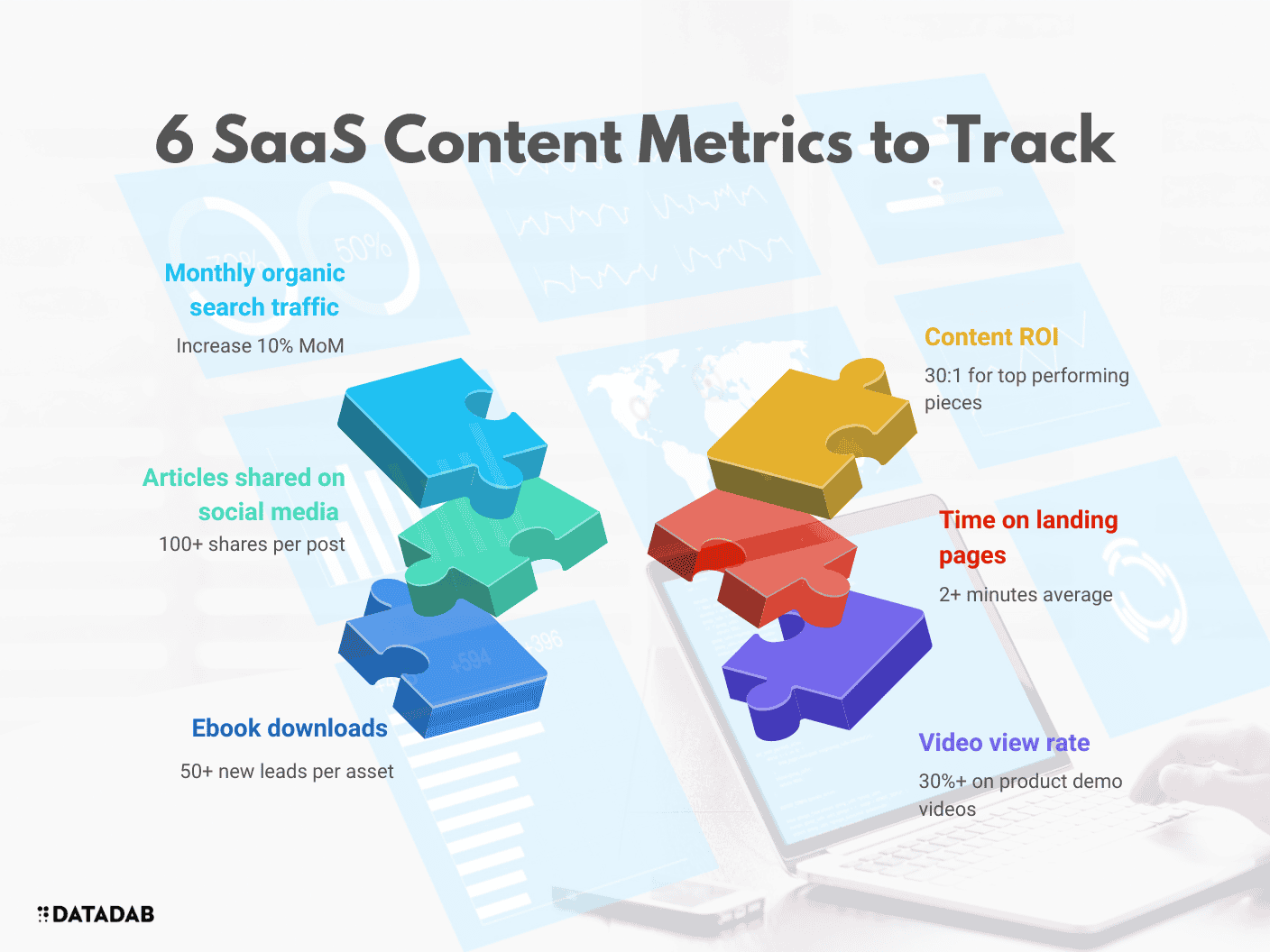"If you can create content that solves people's problems, then you have a customer for life."
- Carlos Gil, Inc.com
Have you ever felt overwhelmed trying to create content that actually resonates with your audience as a SaaS marketer? I've been there too. Getting lost in keyword research, producing blogs posts that get little engagement, and seeing poor conversion rates is frustrating, but it doesn't have to be this way.
I had a realization after yet another piece of content failed to land - I was creating content for algorithms and vanity metrics instead of for my customers. I decided things had to change. I started asking users what content they wanted, optimized my posts for readability instead of keywords, and focused on educating without the hard sell. And it worked - my content started converting like never before.
In this guide, I want to share what I've learned about creating SaaS content that clicks. I'll cover understanding your audience, crafting compelling stories, optimizing for SEO without over-keywording, educating leads without being salesy, and using data to refine your strategy. With the right approach to your content, you'll see higher engagement, increased awareness, and most importantly - new loyal customers for your SaaS. So let's get started with the foundational step - truly knowing your audience.
Understanding Your Audience: The First Step to Great Content
The foundation of impactful content is intimately understanding your target audience. Who are their ideal customers? What challenges do they face? What information are they seeking? The more you can empathize with and address the needs of your audience, the more your content will resonate.

Identifying Your Ideal Customer Profile
Start by building out detailed buyer personas that capture your ideal customers’ demographics, pain points, and motivations. Surveys, interviews, and customer analysis can provide insights into questions like:
- What are their biggest challenges and needs?
- How do they look for solutions and information?
- What content format do they prefer - articles, ebooks, videos?
- What messaging and positioning appeals to them?
Having a clear picture of your ideal customer makes it much easier to tailor content that speaks directly to their interests and priorities.

Using Customer Feedback to Shape Content Strategy
Existing customers are a goldmine for understanding what content works. Analyze support tickets, social media, reviews, and surveys to uncover what customers are asking about and struggling with. Identify the knowledge gaps and questions that your content could fill.
Also proactively solicit customer feedback through surveys, interviews, and focus groups. Ask what content they find valuable and what they’d like to see more of. This direct line to your audience will help ensure you're producing relevant content rooted in their actual needs.
Crafting Compelling Stories Around Your SaaS Product
Once you know who you’re speaking to, the next step is crafting a compelling narrative. Storytelling brings your content to life and draws readers in. But SaaS content must balance engagement with education about the product.

Storytelling Techniques for Engaging Content
- Spotlight customer stories: Case studies and customer testimonials are highly engaging storytelling tools. Putting a face and experience to your product makes it relatable.
- Leverage story arcs: Attach narratives like problem-solution, hero's journey, before-after to demonstrate the value of your product.
- Use conversational language: Adopt a friendly, approachable tone that makes readers feel like you're speaking directly to them.
- Add personality with humor: Occasional appropriate humor makes you memorable and humanizes your brand.
- Incorporate visuals: Relevant photos, charts, videos and other media break up text and keep readers engaged.
Examples of SaaS Companies Nailing Their Content Narrative
- HubSpot uses highly conversational blog posts with quirky illustrations to teach inbound marketing principles.
- MailChimp’s fun videos like “Email Marketing Horror Stories” entertain while educating.
- Zapier incorporates funny comics, memes and gifs into their tutorials to engage users.
Leverage these storytelling elements, but always keep the focus on useful information for driving adoption of your software.
SEO for SaaS: Getting Your Content Seen
Crafting compelling content is only the first step - you also have to make it discoverable. With the right SEO strategy, your content will feature prominently in search and reach the ideal visitors.
Keyword Research: Finding What Your Audience Searches For
Keyword research reveals what terminology your audience uses so you can optimize content accordingly. Tools like Google Keyword Planner, SEMrush and Ahrefs provide keyword search volume data.
Analyze competitor content and paid ads for their targeted keywords. Prioritize keywords with high search volume that align with your products’ capabilities.

SEO Best Practices Specific to SaaS Content
- Logical page titles and headers using keywords: Include important keywords naturally in headings and page title tags.
- Compelling meta descriptions: Write meta descriptions with questions, value props, or keywords to attract searchers.
- Optimize blog posts around keyword-driven topics: Helpful, information-rich long-form posts will rank well.
- Link building: Develop links from industry websites by contributing guest posts or partnerships.
- Leverage software-specific terms: Use naturally - “dashboard”, “API”, “integrations”, “workflows”.
With strategic keyword optimization, your content will gain visibility in search and reach high-intent visitors.
Using Content to Educate and Convert
Beyond attracting an audience, SaaS content must also smoothly lead visitors into the sales funnel. Educational content builds trust while persuasively communicating the value of your product.
Developing Educational Content That Also Sells
- How-to guides: Tutorials demonstrate your product's capabilities while teaching skills.
- ROI calculators: Help visitors quantify money or time savings from using your software.
- Free trial offers: Gated premium content like ebooks incentivizes free trials.
- Product tour videos: Walkthroughs highlight key features and real use cases.
- Industry benchmark reports: Establish your authority while capturing lead data.
Balancing Information and Persuasion
- Focus on genuinely helping users solve problems vs overtly selling.
- Segment content by visitor lifecycle stage - awareness, consideration, decision.
- Make value clear but leave room for product team follow up calls-to-action.
- Progress from general education to specific product capabilities further down funnel.
Prioritizing user needs builds trust that your product is the right solution when decision time comes.
Tracking Success: Analytics for SaaS Content Marketing
To refine your approach, carefully track performance using web analytics and attribution modeling. Optimize based on insights into what content resonates.

Key Performance Indicators to Watch
- Traffic sources: Website traffic channels - organic search, social, email, referral.
- Engagement metrics: Time on page, clicks, scroll percentage, video views.
- Conversions: Email signups, downloads, free trials, purchases.
- ROI: Revenue attributable to a piece of content.
Tools for Measuring Content Effectiveness
- Google Analytics: Traffic source and behavior data, conversions, ROI.
- Google Search Console: Search performance - impressions, clicks, rankings.
- BuzzSumo: Analyze content engagement and competitors.
- ClickFunnels: Sales funnel creation and conversion rate optimization.
Learn what your audience responds to and double down on more content in that vein. Analyze low-performing content to identify improvement areas. A data-driven approach ensures continually optimized content that delights users while achieving business goals.
Conclusion
For SaaS companies, content is a top acquisition and brand-building channel. But to break through in a noisy market, content must be finely tailored to resonate with the target audience. Strategic storytelling, SEO optimization, educational messaging, and analytics-driven iteration are key to creating content that clicks. Keep the focus on genuinely helping customers, and the sales will naturally follow.
FAQ
1. What types of content should a SaaS company focus on?
SaaS companies should utilize a range of content formats and topics to attract and engage their target audiences. Recommended formats include long-form educational articles, how-to guides, product tear downs, case studies, ebooks, blog posts, webinars, videos, and more. Topics should address common user pain points, product capabilities, industry trends, thought leadership insights, and compelling stories. Mix educational, entertaining, and promotional content tailored to personas across the buyer's journey.
2. How can I better understand my target SaaS buyer personas?
Gaining insights into your ideal customer profiles is crucial for crafting resonating content. Survey existing users about their challenges, motivations and content preferences. Analyze support tickets and NPS data to identify pain points. Interview sales reps about common buyer questions. Use lead gen offers to collect demographic and firmographic data. Develop 3-4 detailed personas with bios, goals, challenges and content needs. Create an empathy map to walk in their shoes. Refresh personas regularly to keep current.
3. What is a good content creation process for a lean SaaS startup?
For lean startups, take an agile approach to content creation. Audit existing assets to identify content gaps or upgrades needed. Brainstorm a content calendar based on topics that align to user needs, search trends, and sales objectives. For ideation, examine competitors, trends, and customer inquiries. Outline the title, format, length, and goal for each piece. Write or produce content in short sprints, publishing continuously versus long-form pieces. Use free tools like Canva for simple design. Promote new content through email lists, social media, and outreach. Analyze performance and optimize the process.
4. How can I make my SaaS content more engaging and enjoyable to consume?
Start by using an approachable, conversational writing style and friendly visuals. Incorporate storytelling elements like narratives, metaphors, humor, real-world examples, and customer voices. Break up text with images, videos, illustrations, charts, and headers. Use creative titles and subtitles to capture attention. Design content for skimmability - highlight key takeaways, include bullets, bolded text, and ample whitespace. Vary content types and formats to appeal to different learning styles. Keep the focus on helping users - not just product pitches.
5. What SEO strategies work well for SaaS content?
Optimizing content for SEO should be a priority for SaaS brands. Start with keyword research to identify high-value search terms and topics. Incorporate target keywords naturally in titles, headers, URLs, meta descriptions and content. Produce long-form, in-depth articles optimized around keywords. Refresh old content to keep it relevant. Add schema markup for rich snippets. Build quality backlinks by contributing to industry publications. Publish new content consistently - aim for 2x a week minimum. Make the website fast, mobile-friendly and easy to navigate. Use tools like SEMrush, Ahrefs, and Google Search Console to refine strategies.
6. How can content support the sales funnel and convert visitors?
Content should nurture visitors from awareness stage down the funnel. Blog posts and guides capture attention and introduce problems. Middle-funnel content like case studies showcase your solution and value prop. Lower-funnel content gives product specifics - demos, pricing pages, free trials. Gated offers like checklists and ebooks provide lead gen. Each piece should build trust while moving users towards a conversion goal. Work with sales to identify objections content can help overcome. Use calls-to-action, email nurturing, and live chat to progress visitors down funnel.
7. What metrics should I use to analyze my SaaS content performance?
Key metrics for SaaS content include: traffic sources, pageviews, time on site/page, bounce rate, social shares, leads generated, and revenue attributed to content. Dig deeper into engagement with scrolls, clicks, video views, comments, and emails generated. Look at goal conversions like trials, demos, purchases. Track user journeys through your site. Set up Google Analytics, search console, and social listening. Measure ROI by linking content to pipeline and revenue. Define success benchmarks for each metric and analyze trends.
8. How can I promote my SaaS content for maximum impact?
Amplify content reach through social media, email, SEO optimization, public relations, and paid advertising. Share natively on LinkedIn, Twitter, Facebook. Leverage employee networks for shares. Send personalized outreach to influencers and journalists. Repurpose content into different formats. Produce companion content like teasers, quotes, and stats for social. Run paid promos on high-value content. Promote gated offers through advertisements. Guest post on industry blogs for backlinks. Use internal channels like newsletters, blog, site banners.
9. How often should I be creating content for my SaaS company?
For established SaaS brands, aim to publish high-quality content at least 2X per week. More frequent content has greater impact on SEO and keeps visitors engaged. Longer-form educational articles or ebooks can be once a month. Use your analytics to determine optimal publishing frequency - higher performing content may warrant more similar pieces. Plan content themes around events, news cycles, and seasonality. Recycle evergreen content on social channels in between new content pushes. Build up an archive of reusable assets like quotes, stats, and images.
10. What tools can help streamline my SaaS content operations?
To maximize efficiency, incorporate purpose-built tools into your workflows. Leverage content planning and collaboration tools like Asana to organize ideas and assignments. Use Grammarly and Hemingway for writing enhancement. Headline analyzers help test titles. Canva and Venngage facilitate design. Leverage analytics like Google Search Console, BuzzSumo, and SEMrush. Marketing automation platforms help nurture leads. Utilize plagiarism checkers to ensure original content. Enable commenting to gather feedback. The right tools help scale high-quality content efficiently.






